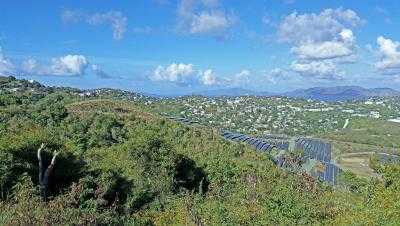Pasadena Texas high schools become solar labs
 Pasadena, Texas, earned the unfortunate moniker “Stinkadena,” thanks to its history as an oil-refining town. Despite the history, the town’s students are now learning about a much greener, cleaner form of energy thanks to solar laboratories, installed at two of the Houston suburb’s high schools.
Pasadena, Texas, earned the unfortunate moniker “Stinkadena,” thanks to its history as an oil-refining town. Despite the history, the town’s students are now learning about a much greener, cleaner form of energy thanks to solar laboratories, installed at two of the Houston suburb’s high schools.
The labs, each of which consist of three solar technologies—with two more on the way, were made possible as part of an air-pollution settlement Royal Dutch Shell reached with local environmental groups. Shell agreed to upgrade its refinery to decrease pollution and increase efficiency, pay $5.8 million for alleged violations, pay $2 million toward solar projects at Sam Rayburn High School and at South Houston High School.
The initiative is the largest solar rooftop project in any Texas public school system, according to the Pasadena Independent School District. Together, the solar installations are designed to produce 145 kilowatts of energy and will save the school system roughly $15,000 a year in annual energy costs. However, the real value of the systems is that they’re also being used in the school curriculums, educating students about differing solar technologies and how they work.
Pete Mathey, CEO of Ignite Solar, which installed the arrays, said that the company installed Moser Baer multicrystalline silicon panels at the schools in three configurations, on awnings, flat on the roof and at a 10 degree angle to show how the panels are affected by the differing locations and angles. In addition, the company installed Solyndra’s circular modules and Unisolar modules at each school.
The only arrays that required roof penetration were the angled rooftop panels, according to Mathey. He said those installations required minimal penetration but had to be ballasted. The systems, he explained had to be designed for hurricanes.
“It’s a 130-mile-an-hour wind load we had to meet,” he said.
Ignite will install two more technologies at each school. One will be a tracking system, and the other a laminate-polymer encapsulated crystalline silicon system which will attached to the roofs of the schools.
The schools have educational kiosks showing each array’s production, Mathey explained.
“Students can look at the variations of technology and the installations,” he said. And they can see how much each array is producing. “At the kiosks we’re only going to have information on their school. But they can look online and find the data on the other school.”
The schools are also incorporating the arrays into their curriculum, according to Mathey. As an example, he said, math teachers could give their students array specifications, then have them research what the systems are actually producing and have them calculated the difference, allowing them to better understand how the systems work.
Image courtesy of Pasadena Independent School District.



